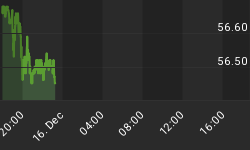The Chicago Mercantile Exchange (CME) is currently having discussions with market participants and is considering launching in 2013 two new futures contracts related to inflation: a Consumer Price Index (CPI) futures contract and a deliverable TIPS futures contract. My company has been an advocate for these contracts and involved in their construction. We expect to be involved in making markets in them. Our interest is therefore no doubt obvious. But are these contracts important, in a larger sense, for the market? The answer is yes, and here is why.
It is a fact of financial life that most mature markets enjoy three legs of a liquidity ecosystem: cash markets, over-the-counter (OTC) derivatives, and exchange-traded derivatives. For example, in the nominal interest rates market Treasuries provide a deep and liquid cash market, there is a large and well-functioning market for LIBOR swaps, and there is efficient and transparent pricing in the futures markets as represented by Bond, Note, 5-year Note, 2-year Note, UltraBond, and Eurodollar contracts.
The presence of three legs, rather than only one or two, in this ecosystem is important. With two legs, there are only two directions of liquidity transmission: A to B and B to A. But with three legs, there are six ways that liquidity can be transferred: A to B, A to C, B to A, B to C, C to A and C to B. By adding the third leg, the avenues of liquidity transmission aren't increased 50%, but threefold.
This richer liquidity ecosystem matters the most in crisis situations, such as during the credit crisis of 2008. Consider that during the crisis, credit and inflation markets became quite illiquid at times while equities, nominal rates, and commodities remained (comparatively) liquid. The main difference between these two sets is that the latter three markets all have cash, OTC, and exchange-traded instruments while the former two have only two (in both cases, cash and OTC derivatives).
Accordingly, while the inflation-linked bond market has become truly huge (see chart below, source Barclays Capital) and the inflation-linked swap market has enjoyed an almost uninterrupted rise in volumes since 2006, investors need the third component of the ecosystem: exchange-traded futures contracts on inflation and/or real rates. It is interesting to note that one analysis of the original CPI futures contract traded on the CSCE (many years ago) suggested that a prime cause of the contract's failing was that "...the CPI futures market, unlike other futures markets, has no underlying asset which is storable or traded on an active spot market, which reduces the opportunities for arbitrageurs and speculators to participate in the market." (Horrigan, B. R., "The CPI Futures Market: The Inflation Hedge That Won't Grow", Federal Reserve Bank of Philadelphia Business Review , May/June 1987, 3-14).

Adding these products will likely increase the volumes and the liquidity of all inflation products, including (perhaps especially) the liquidity of off-the-run TIPS. This liquidity will also remove the main lingering concern among those investors who have not yet made meaningful investments in the market.
Inflation-related futures are not a new idea. Since at least the 1970s, economists have anticipated that these instruments would one day be available. Several previous attempts, dating back to as early as the mid-1980s, have failed for various reasons - too early, too different, bad structure. But futures that present a different method of investing in, trading, or hedging inflation and real rate exposures are needed, not only because they create opportunities to make different sorts of trades or to trade more efficiently but also for the good of the market itself. Healthy markets in CPI futures and TIPS futures will create a better liquidity ecosystem for the entire inflation market, including for off-the-run TIPS bonds and seasoned inflation swaps.
Unfortunately, at the moment the CME appears to be afraid of launching new products that might not immediately work. It wasn't always that way - once, a CME official told me that since it cost them virtually nothing to list a contract, they favored launching lots of them and seeing what the market took to. This has changed, and the pendulum has swung in the opposite direction. Now, although many market participants are asking for these futures and there are market-makers willing to make markets, the CME is deferring a decision on them until later in the year. I remain hopeful that they will launch, because they are sorely needed.
You can follow me @inflation_guy!
Enduring Investments is a registered investment adviser that specializes in solving inflation-related problems. Fill out the contact form at http://www.EnduringInvestments.com/contact and we will send you our latest Quarterly Inflation Outlook. And if you make sure to put your physical mailing address in the "comment" section of the contact form, we will also send you a copy of Michael Ashton's book "Maestro, My Ass!"
















